You would think that Halloween is a holiday that needs no introduction. However, few people actually know what this holiday is all about. For most people, Halloween is just a fun holiday and a chance to dress up, eat candy and decorate the house with horror-themed plastic décor.
But, if you want to make this year’s holiday a bit more special, we advise you to learn a few things about the true meaning of Halloween and the fascinating history behind this celebration.
And if you want to ditch the cheap décor, we have some houseplant ideas that can be spookier and more original than commercial props. Keep on reading to discover some unique Halloween decorating ideas with spooky houseplants.
Watch Our Latest YouTube Video ...
Popular Plants Associated with Halloween
1. Pumpkins and turnips
In Europe, lanterns were carved out of turnips on Halloween. The turnips were carved into shapes of demonic creatures in order to ward off Jack’s wandering soul.
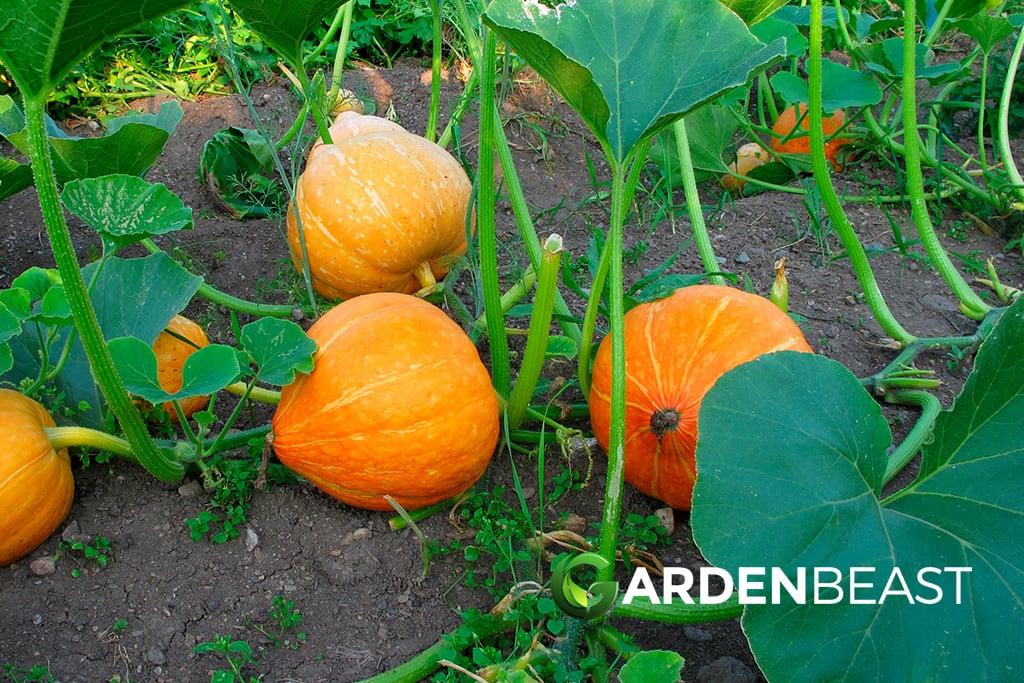
When this holiday transitioned to America, it made much more sense to carve pumpkins. After all, pumpkins were abundant and much bigger than turnips.
Pumpkins are the official fall flavour and scent and are a major part of this spooky holiday. If you want to learn more about them, read our complete guide to planting and growing pumpkins.
2. Chrysanthemums
These flowers steal the spotlight in any fall décor. However, their history in décor has more to do with their spiritual properties than with their lovely fall colours.
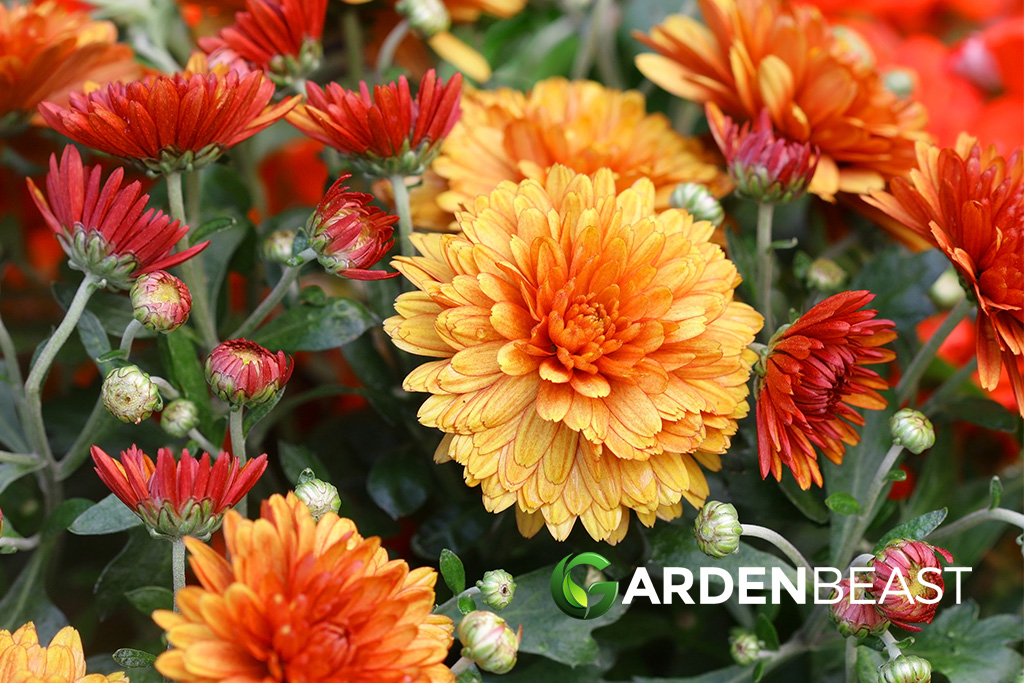
Chrysanthemums are believed to offer metaphysical protection. Due to their earthy, yet vibrant colours, they are also associated with the sun, which is a symbol of light and life. As such, they were often used to ward off death and darkness. Learn how to grow them from our complete guide to chrysanthemums.
3. Mugwort
This is yet another plant with powerful spiritual powers. It is associated with divination, but it is also used as a remedy to cast off bad energies. Baths with mugwort are recommended for people who are surrounded by bad energy and can’t sleep. Moreover, a mugwort infusion was often used in the middle-aged to treat demonic possessions.
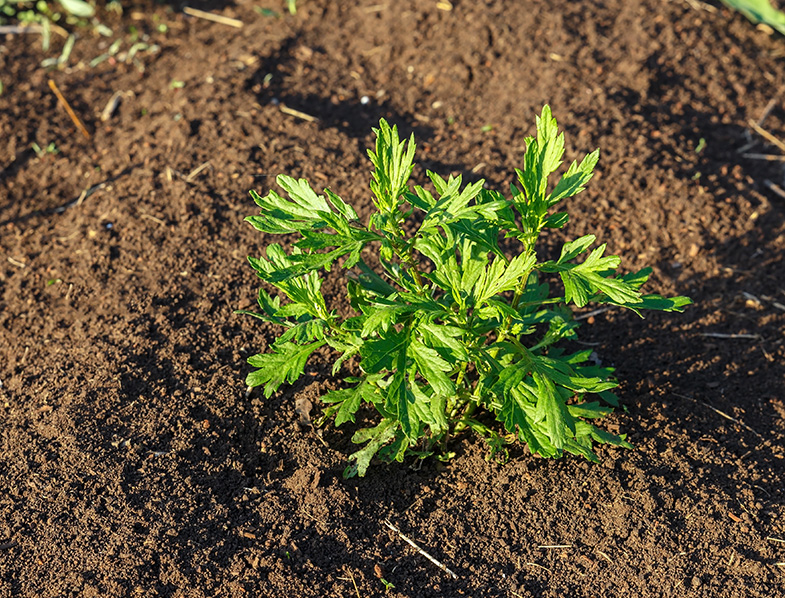
Potted Plants that Make for Spooky Halloween Décor Pieces
While the spirit of Halloween is lovely, the plastic, disposable décor should be eliminated from this holiday. To encourage a more sustainable way to celebrate this holiday, we have gathered a big list of plants that are spooky by nature. Some have creepy feeding habits while others are harmless but they look deadly. These plants are guaranteed to scare anyone in a gloomy Halloween atmosphere.
1. Moonflower
OK, this may not sound like a scary Halloween plant, but hear us out. Ipomoea alba, commonly referred to as moonflower or tropical white morning-glory, is actually quite beautiful and not at all scary. This plant has bright white flowers.
If you manage to maintain this plant with flowers until Halloween, it will be great for turning your patio into a witchy moon garden. The white flowers reflect the moon’s light, creating an eerie atmosphere. This plant typically blooms from summer until late fall, so you should have some blooms to work with.
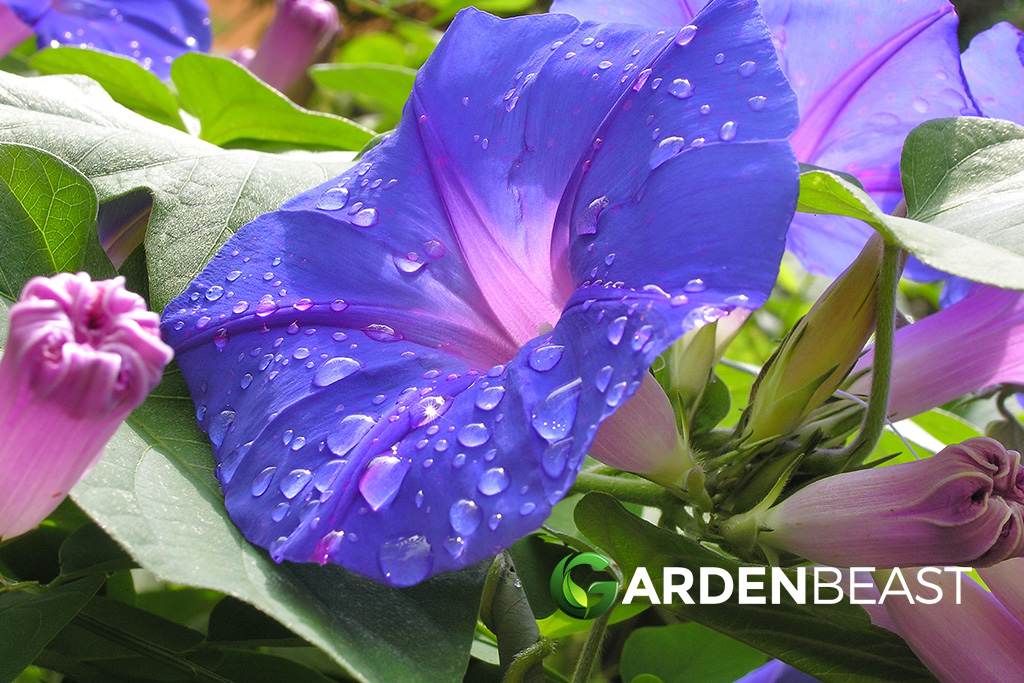
However, if you lose the blooms, you can work with the very rich foliage to create a Halloween décor. You can integrate small toys into the foliage arrangement and make it seem as if the vine is strangling them.
This plant likes moist soil with good drainage. A young plant needs to be watered more often but an adult plant can be left until the top 5 cm of its soil dries out. Since this is a climbing plant it will need vertical support.
You can leave a young plant with the vines hanging, but once it grows you can no longer grow it as a hanging plant. There are special trellises that you can buy or build for potted plants. For optimal growth, place the plant in a spot where it gets plenty of morning sunlight but only shade in the afternoon.
Keep in mind that this plant is toxic, so keep it away from pets and children.
2. Red spider lily
Lycoris radiate, also known as the Red spider lily plant has a very spooky appearance which may be why it is also surrounded by some creepy legends. It is believed that it grows in Hell and that it guides the dead towards their new reincarnated lives.
Because it is associated with the dead, it is never used as a gift. Nonetheless, it grows just as well in USDA zones 5-10 as it supposedly grows in hell. If you care for it properly, it can make for a great potted plant and a lovely Halloween prop.
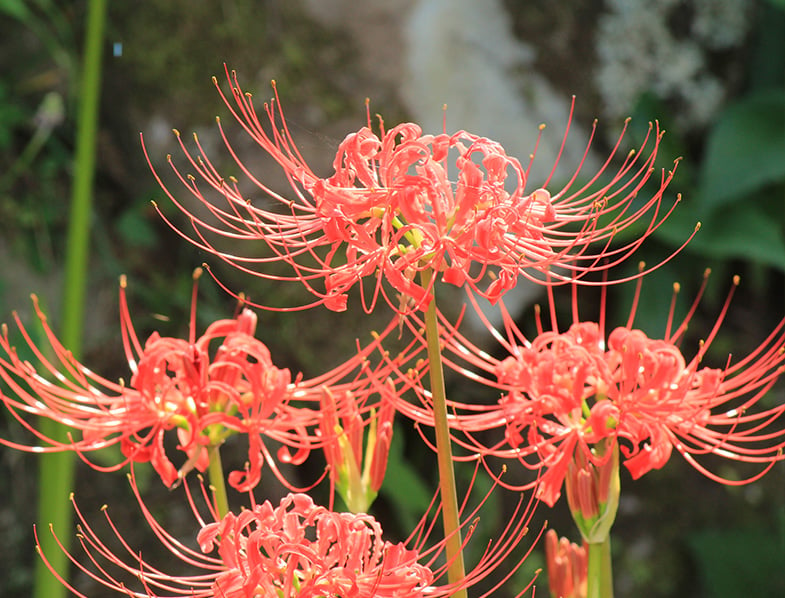
It can reach a top height of 60 cm with an average width of 35 cm. It features long curved stamens and thin petals. It basically looks like an upside-down bloody red spider.
The Red Spider Lilly plant has very long roots so make sure to plant it in a container that is at least 40 cm deep. It grows well in full sun exposure but it grows even better in partial shade. In fact, it blooms earlier in partial shade. It likes rich organic soil with good draining properties.
Fertilize it in early spring and keep watering to a minimum in the summer when it is dormant. The only part of this plant that is toxic is the bulb, so make sure to keep it away from pets if you know that they like to dig into your potted plants.
3. Bat flower
It’s enough to take a quick glance at this flower to know what inspired its name. It features dark purple bracts that resemble bat wings with a cluster of small flowers in the middle. It also features some whisker-like strands that shoot from the middle of the bracts in all directions.
Overall, it has a very gothic vibe. Its botanical name is Tacca Chantrieri. It is native to southern Asia. While its appearance doesn’t suggest it, this plant is a type of orchid, so it is perfectly happy to be grown indoors in a container like most orchids. It can reach a top height of 90 cm and a top width of 30 cm.
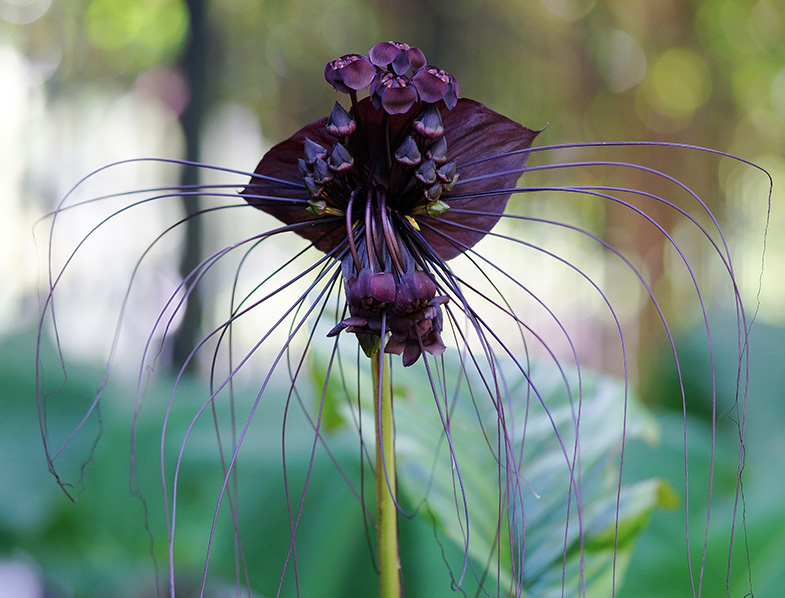
The Bat Flower needs a wide, shallow pot. Like most orchids, it prefers a bark-based potting medium. You can mix pine bark with peat moss and up to 10% of sand. It grows best in partial sun or dappled shade. This is a very thirsty plant.
It likes to be watered abundantly until the potting medium is saturated and it likes the medium to be kept moist. Air moisture also helps it, so you can make its environment more friendly with an air humidifier.
4. Corpse flower
Titan arum commonly referred to as the corpse flower is not the type of plant that you’ll want to grow in your garden and maybe we should have kept it for the end to ease your way into the world of creepy houseplants.
However, we still have plenty of creepy plants on our list, so no need to worry. It is very hard to imagine what inspired its name. While this plant doesn’t look like a corpse, it looks just as creepy as one. It is in fact an aroid.
Its flowers are born on an inflorescence known as the spadix. It is related to Anthurium, also known as the Flamingo flower. What makes the Corpse flower so spooky is not its shape, but its size.
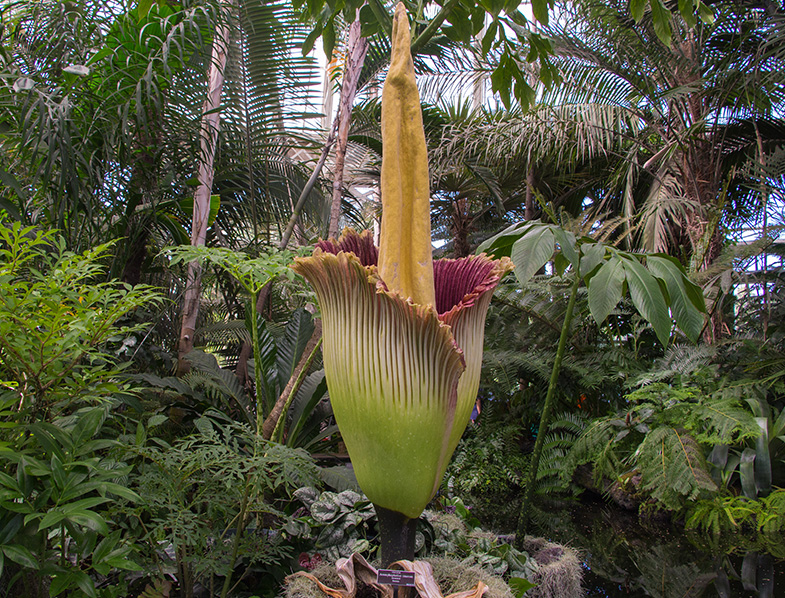
It can reach a top height of 270 cm and a top width of 50 cm. This is a large plant so it needs to be repotted gradually. However, it is a slow grower so this won’t be a very frequent task. Nonetheless, being a slow grower means that it takes a long time to mature.
As a result, you will have to wait for 8, maybe 10 years before you see it bloom. However, when it does bloom, it puts on quite a spectacle with an inflorescence that can grow up to 3 meters. Nonetheless, the smell of this plant is not something that you can live with. As such, be happy that the inflorescence only lasts 48 hours.
The best medium for this plant is a mixture of 30% potting soil, 40% bark, 20% peat, and 10 % perlite. It needs bright indirect light or dappled shade to thrive. This plant only grows one leaf. It is dormant in the winter, so don’t be afraid when it loses its leaf at the end of each growing season.
The corpse flower needs moist soil at all times. Make sure to water it as soon as the top dries out. If you don’t provide it with enough water you might send it into a dormancy period.
5. Begonia Mazae Nigricans
Let’s move on to a less spooky, but easier-to-grow houseplant. While this plant is not spooky on its own, it can put on a scary show in the right context. It has dark green, almost black leaves with serrated margins.
The leaves are asymmetrical and can reach a top length of 10 cm. Both the stems and the edges of the leaves are slightly hairy. The leaves are arranged alternatively on the stem. The centre of the leaf has a very light green shade and a star-like shape.
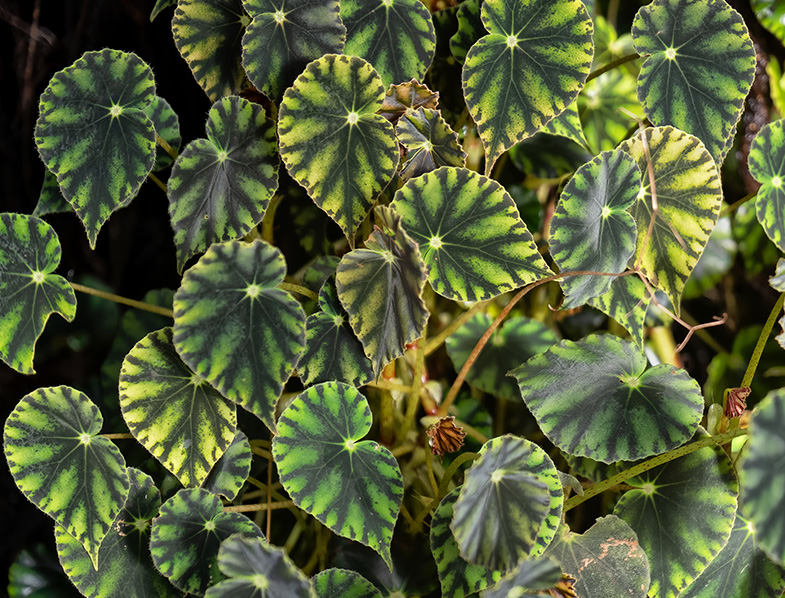
The combination between the very dark leaf and the star-like centres gives this plant a very magical appearance. Place it in a shady location with a spotlight directed at it for the best effect.
Begonias need light potting soil with good drainage. Adding some perlite to the soil is recommended to prevent root rot. This plant needs a semi-shady location. Like most begonias, it prefers the soil to be moderately moist.
Water it every 3-4 days, but feel free to experiment a little with the schedule until you find the right frequency. Moreover, adapt your watering schedule to the temperature and humidity.
6. ZZ Raven plant
Black is not a shade that we associate with plants so when we do see black plants we associate them with dark and unnatural environments.
As such, the ZZ Raven plant is a wonderful plant to have around on Halloween night, and for the rest of the year too. The ZZ plant is a very common indoor plant known for its bright green foliage.
The ZZ raven plant is a hybrid that is identical to the ZZ plant, the only difference being that its foliage is almost black. Well, the shade is actually purple-green, but it changes and darkens as the plant ages. The leaves are oval-shaped and they grow in a feather-like shape.
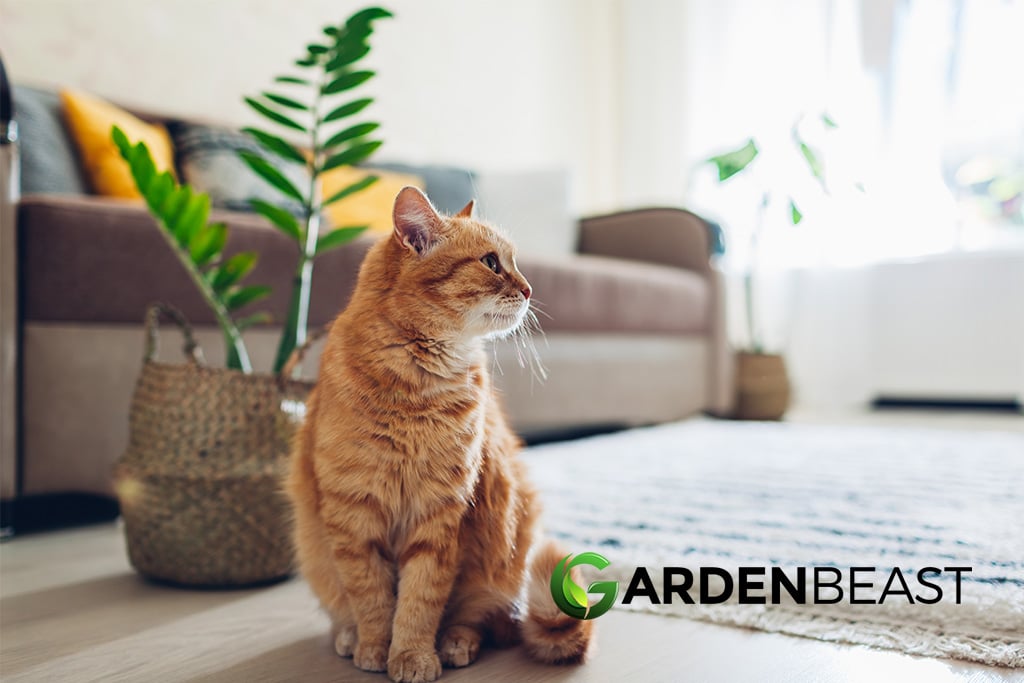
The stem is thick and bulbous but it tappers to the tip. Both the leaves and the stem are waxy and shiny. To the untrained eye, this plant is so shiny that it can appear artificial.
The ZZ raven plant can survive in most light conditions, but it thrives in indirect light. It is a draught-tolerant plant, so allow the soil to dry out completely before watering sessions. Since it is a very hardy plant, it can survive in most types of soil.
It just needs a medium with good draining. Adding some perlite and sand to a regular potting mix is your best option, but this plant can even grow well in a succulent mix. Learn more about these fascinating plants from our complete guide to ZZ plants.
7. Colocasia Black Magic
Also known as Black Elephant Ears, this is yet another plant that probably belongs to Morticia Adams’s garden. This is a tender perennial cultivar that grows large arrow-shaped leaves that bear a slight resemblance to elephant ears.
The leaves emerge as light green but they turn into a deep purple, almost black shade as they mature. In the wild, this plant can reach a maximum height of 2.5 meters and a maximum spread of 1.5 meters.
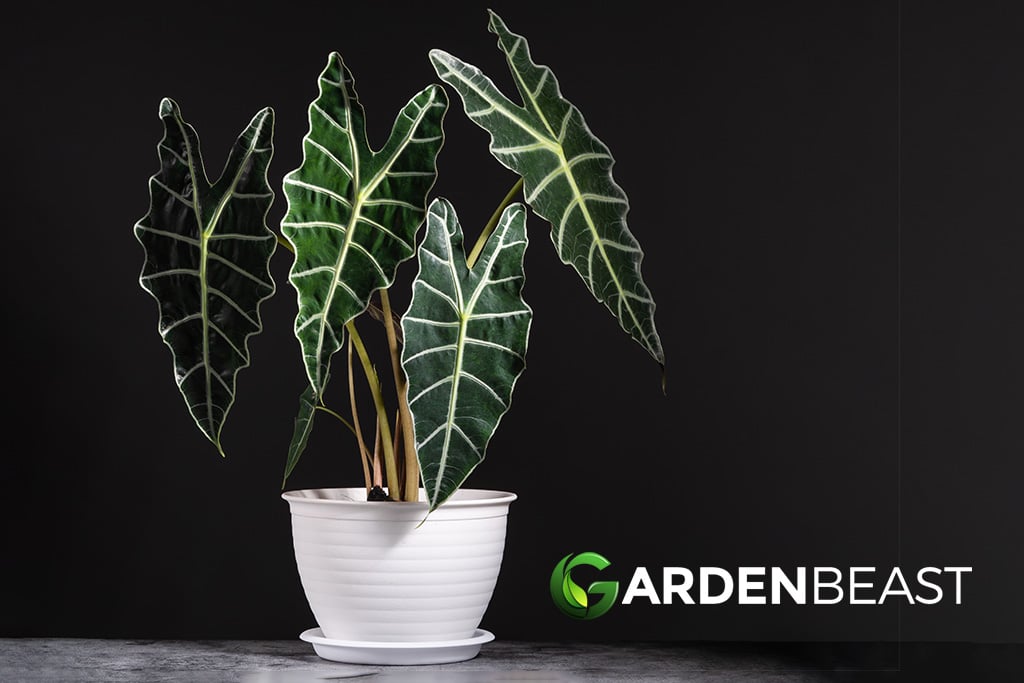
However, it takes about 5 years to reach maturity, and it doesn’t grow that big indoors. As such, you don’t need to worry that it will take over your living room.
This plant grows best in partial shade. It prefers moist soil with good drainage. It also likes humus-rich soil, so invest in a proper medium for it. It is native to tropical and subtropical regions so it enjoys high temperatures and high levels of humidity.
In the wintertime use a room humidifier to make the air more pleasant for it. Water it frequently, especially during dry summers. Don’t worry if you have a young plant that keeps losing leaves. It is normal for young leaves to lose weight as the stalk extends. Once it matures, it will hold on to its leaves.
8. Purple Oxalis
This plant has a very unique appearance. It has a deep-purple shade, that can look almost black at times. It has triangular leaves that grow in groups of three. The leaves grow on the top of the stem. Since the stem is very thin, the leaves look like dark butterflies or small bats.
The leaves have a lighter shade in the middle and they look like a triangle folded in the middle, which is what makes them look like tiny wings. It is grown for foliage, but it also grows some lovely, less scary light purple flowers. This plant can reach a top height of 15 cm with a top width of 60 cm.
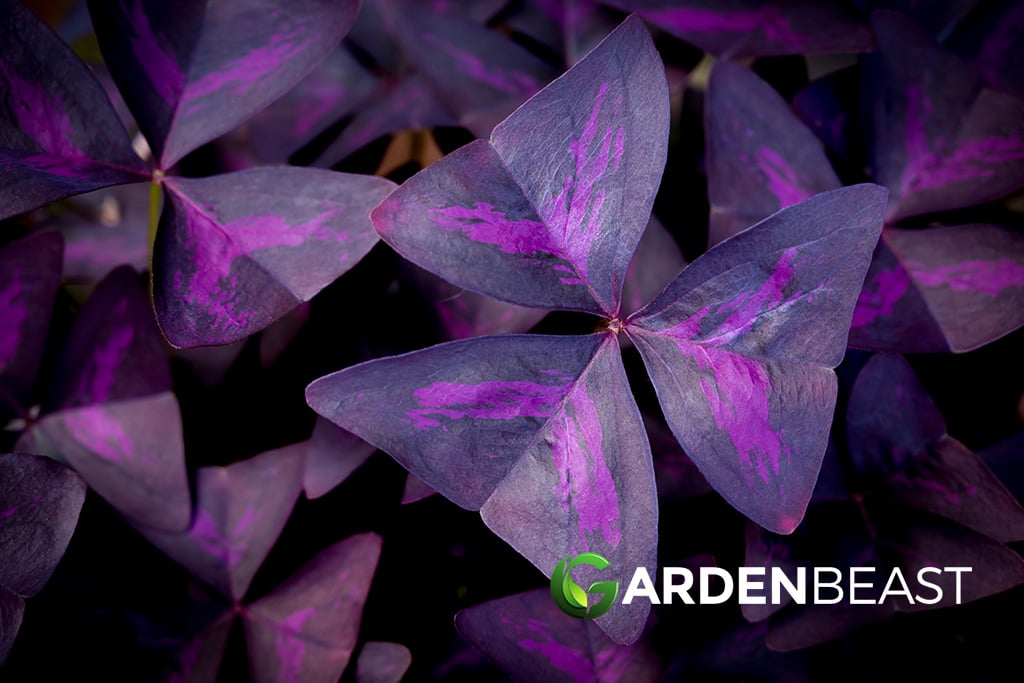
Purple oxalis is a very low-maintenance perennial. It grows well in full sun exposure, but it can also make do with partial sun. It prefers loamy, well-drained soil with an acidic pH. If you care for it right, it can bloom from spring until winter.
This plant is dormant in the summer, so you can water it less frequently at that time. Ideally, in the summer, you should water it lightly every 2-3 weeks. During the rest of the year, you can water it more frequently, but allow the topsoil to dry between watering sessions. Learn how to grow and care for this ornamental from our complete guide to Oxalis.
9. Sarracenia purpurea
Of course, a spooky plant list would not be complete without at least one carnivorous plant. The purple pitcher plant is quite an impressive plant. It will not only freak out the trick-or-treaters but it will also trap annoying insects.
This plant has a pitcher shape and hairy leaves. Each plant produces a single red flower that grows on a tick, leafless stalk. The leaves can be green, reddish, or yellow. They have purple veins and hooded lids.
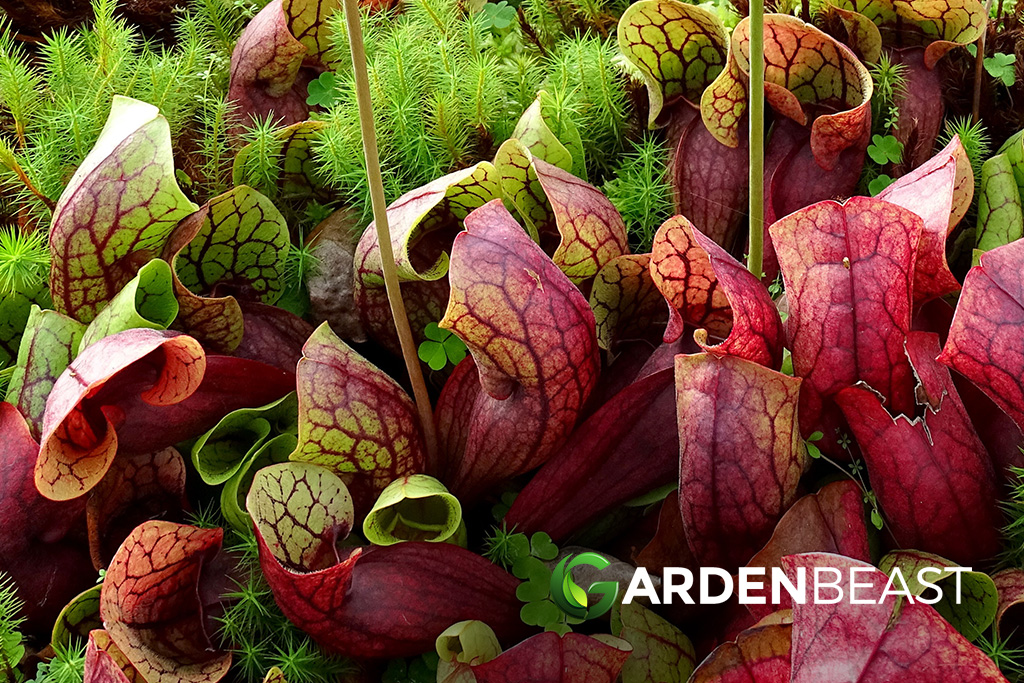
Like most carnivorous plants, Sarracenia purpurea thrives in poor acidic soil. It makes up for the nutrients that it doesn’t find in the soil by trapping live insects. In an indoor environment, where it doesn’t have access to insects, you will need to feed it.
You can feed it insects if you can trap them outdoors or small pieces of meat. It takes about 2-3 days for the plant to digest the meat. This plant needs as much sun as possible to try to give it at least 4-6 hours of full sun exposure.
The more sun it gets, the more vibrant its leaves will be. This is a very thirsty plant that needs the soil to always be moist, almost damp. Place a saucer under it and make sure it always has about 2 cm of water in it. Learn more about this carnivorous plant from our complete guide to Sarracenia purpurea.
10. Venus Fly Trap
As cliche as it may be, this is the ultimate spooky plant. It is essential to have it around, especially if you get visited by kids. After all, who hasn’t seen at least one cartoon with Dionaea Muscipula, commonly known as the Venus Fly Trap taking a bite of someone’s finger? However, that should not be an encouragement for people to touch it.
This plant is way less dangerous than it looks in cartoons, and touching it could harm it. A mature plant will have 4-7 leaves. It can grow 4-10 white flowers with green veins. The leaves are hinged with hairlike bristles that sense prey.
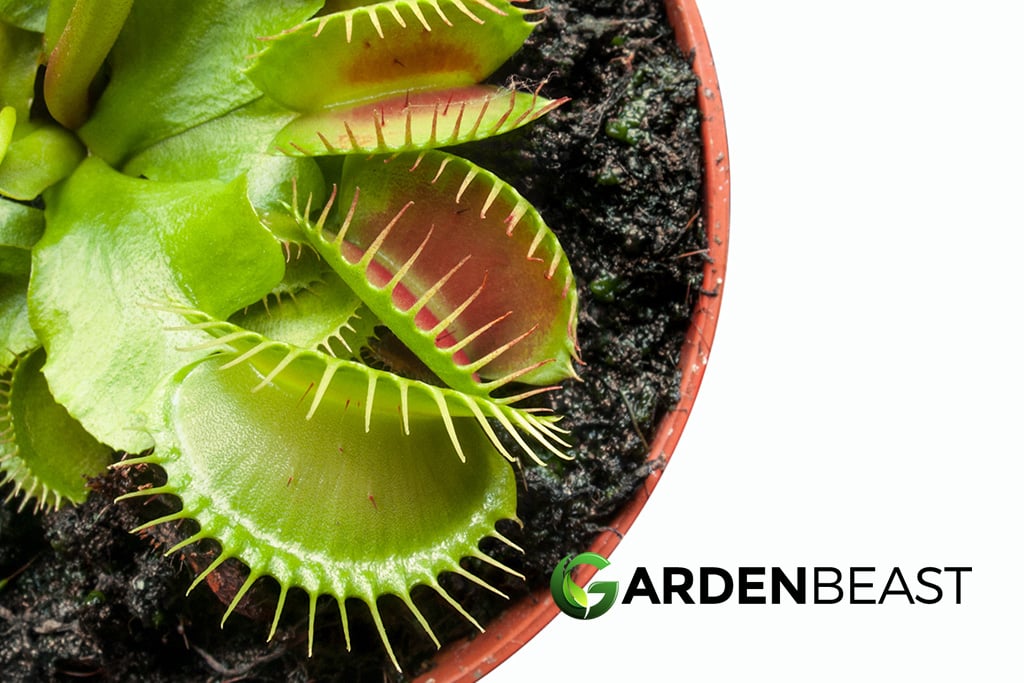
When the bristles sense prey, the trap closes and the plant releases enzymes that digest the prey. Each leaf trap can close several times before falling out.
The Venus Fly Trap needs as much bright indirect light as possible. Direct sunlight is only an option in areas with cold summers.
It needs nutrient-poor soil with good drainage and good air circulation. A mixture of peat moss and perlite is your best bet. Never use standard potting soil. Moreover, never use any compost or fertilizer. This plant is a little high maintenance when it comes to its water needs.
It is very sensitive to chlorine, salt, or dissolved minerals. As such, you must only water it with rain water, distilled water, or reverse-osmosis water. Learn more about this friendly plant from our complete guide to Venus Fly Trap.
A Brief History of Halloween
Not familiar with Halloween? This interesting and popular holiday is celebrated on October 31st. The origins of this holiday date back 2000 years. It was inspired by Samhain, a Celtic festival. The Celts celebrated their new year on November 1st.
They believed that on the night before the new year, the gate between the world of the living and the world of the dead opened. Once the gate opened, ghosts were able to walk the earth. On this holiday, the Celts wore costumes made of animal pelts and lit huge bonfires.
A few hundred years later, this pagan holiday was incorporated into a Christian Holiday, as it so often happened. The Christian Celebration was initially All Martyrs Day, but it later became All Souls Day. The later holiday was more similar to the initial Samhain pagan holiday.
In time, the celebration became All Saints Day or All-hallows (which meant All Saints Day in Middle English). Since it was celebrated on November 1st, the night before became known as All Hollows’ Eve and it eventually settled on Halloween.
How it came that a ghost celebration became the reason behind a quarter of America’s candy production, is a less logical story. Basically, Americans borrowed Halloween from the Europeans and they added the trick-or-treating tradition. Who came up with that idea and how it spread so quickly is a mystery that is unlikely to ever be solved.
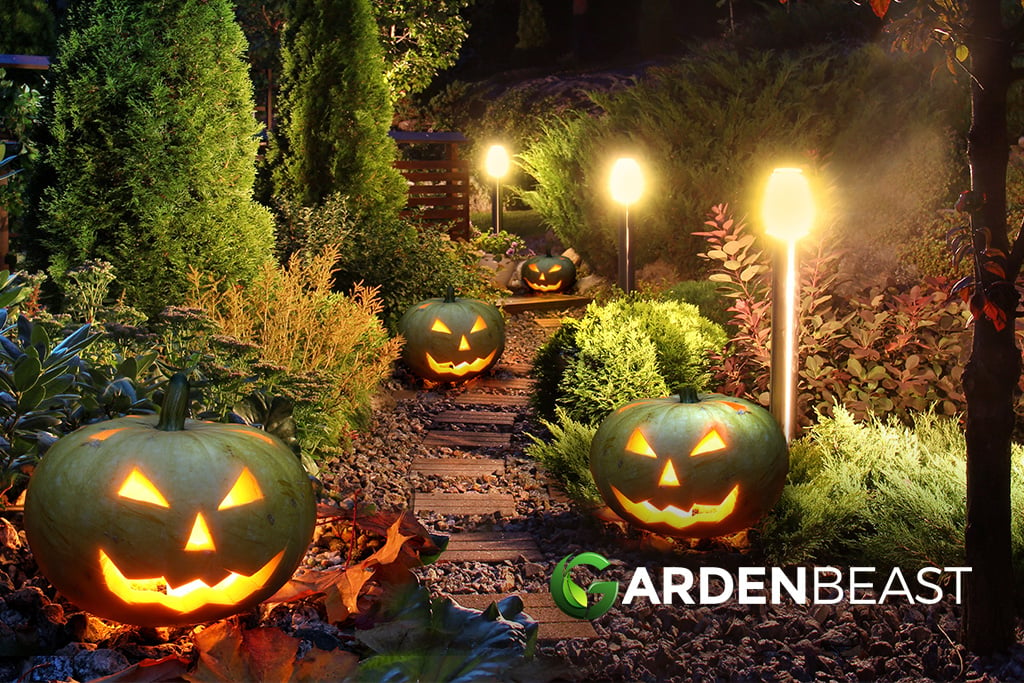
Conclusion
As you can see, the world of plants can be quite creepy if you know what to look for. These plants will look scarier and more authentic than cheap plastic decorations.
Moreover, the beauty of these plants goes beyond their unique designs that will look scary on Halloween. They will be great conversation starters all year long. They are also great reminders that you can find beauty in every living thing. And the best thing about them is that they are pretty low-maintenance so you won’t have a hard time growing them.
What are your favorite Halloween plants? Share your thoughts in the comments!
